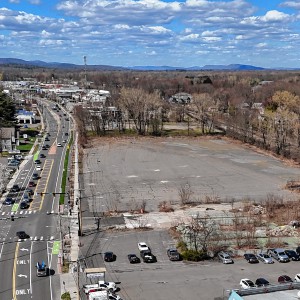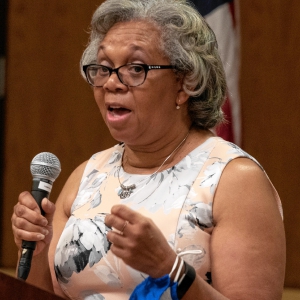Report: Amherst College scores high on commitment to economic diversity
| Published: 05-30-2017 10:24 PM |
Several local colleges have been included on a list of schools “doing the most for the American dream.”
In The New York Times’ third annual College Access Index measuring colleges’ commitment to economic diversity, Amherst College was ranked No. 7 — the highest ranking for any private school. Of the Pioneer Valley’s five colleges, Smith and Mount Holyoke colleges also made the list at Nos. 50 and 66, respectively, demonstrating a higher than average commitment to economic diversity on campus.
The report looked at around 170 colleges that have a five-year graduation rate of at least 75 percent.
The index was calculated by taking the share of freshmen who receive federal Pell grants, which typically go to students in the bottom 50 percent of the income scale, and multiplying that share by the graduation rate for those grant recipients. The other half of the equation comes from the average price that students from families with annual income between $30,000 and $75,000 were charged to attend.
“Together, the index measures how many lower-income students graduate from a college and how much they must pay to attend it,” the Times’ David Leonhardt wrote in an explanation of the report’s methodology. “These statistics remain the only apples-to-apples statistics that most colleges have been willing to release (because the federal government mandates it).”
And according to those statistics, Amherst College does better than most colleges, private or public. Despite a $67,620 price tag for tuition, room and board this coming academic year, the only schools ranked above Amherst in their commitment to economic diversity are five campuses in the University of California system, and the University of Florida.
“Exceedingly proud and delighted that we’re being recognized this way,” was the immediate reaction of Katie L. Fretwell, Amherst College’s dean of admission and financial aid.
However, the result was not surprising, Fretwell said. Amherst College was ranked ninth on last year’s list, and has dedicated substantial resources to ensuring economic diversity at the institution.
Article continues after...
Yesterday's Most Read Articles
 Holyoke man finds bear paw in his yard
Holyoke man finds bear paw in his yard
 Petition to block auto dealership on King Street falters in Northampton
Petition to block auto dealership on King Street falters in Northampton
 First look at how little Amherst’s police alternative being used called troubling
First look at how little Amherst’s police alternative being used called troubling
 Developer lands $400K loan for affordable housing project in Easthampton mill district
Developer lands $400K loan for affordable housing project in Easthampton mill district
 Developer pitches new commercial building on Route 9 in Hadley
Developer pitches new commercial building on Route 9 in Hadley
 Boyfriend accused in slaying of Hampden sheriff’s assistant, former legislator’s top aide
Boyfriend accused in slaying of Hampden sheriff’s assistant, former legislator’s top aide
“There was a time when students from low-income backgrounds, first-generation students, were not well represented on our campus,” Fretwell said. “We’ve been at it for a couple decades now, and have put our money where our mouth is.”
Fretwell said the college has need-based financial aid to make the institution more accessible for low-income families.
A large part of that effort to increase and maintain economic diversity is Amherst’s commitment to meet the full demonstrated needs of every students. In other words, if a student is accepted but can only pay a small portion — or none of — the tuition, the college covers the rest. The average financial aid package this academic year was $51,775.
What that means is that rich students often pay full tuition, whereas students from low-income families attend at sharply discounted rates, or for free. And the resulting economic diversity is evident; just under a quarter of the class of 2020 are eligible for Pell grants.
Fretwell also mentioned other programs that help low-income students succeed at the college: start-up grants that help with the costs associated with moving onto campus; financial aid as graduation nears to help students buy suits for interviews or take standardized tests needed for graduate school; and programs aimed at helping first-generation students adapt to college life.
The college also helps fund students who receive unpaid internships, but are financially unable to work for free. Going forward, the college hopes to expand that aid to living expenses, Fretwell said, adding that those efforts make the campus a culturally richer place to study.
“It helps us get the attention of some of the best and brightest students we might not otherwise,” Fretwell said. “Diversifying the student body with this extra dimension benefits all our students.”
Despite those positive steps at Amherst College and other private institutions of higher education, however, the Times report details troubling signs for economic diversity at public colleges, which have long served as vehicles for upward mobility in the United States.
The report found the average share of freshmen receiving Pell grants at public colleges last year fell to 21.8 percent, down from 24.3 percent in 2011 to 2012. And as many states slash budgets for public higher education, that essential step helping many into the middle class may be slipping away.
Dusty Christensen can be reached at dchristensen@gazettenet.com.

 South Hadley man fatally shot in attempted robbery
South Hadley man fatally shot in attempted robbery Historic murals restored at Victory Theatre in Holyoke
Historic murals restored at Victory Theatre in Holyoke Boards balk at limiting use of Hadley Town Common
Boards balk at limiting use of Hadley Town Common Holyoke man gets 5 years for assault, drug charges
Holyoke man gets 5 years for assault, drug charges
